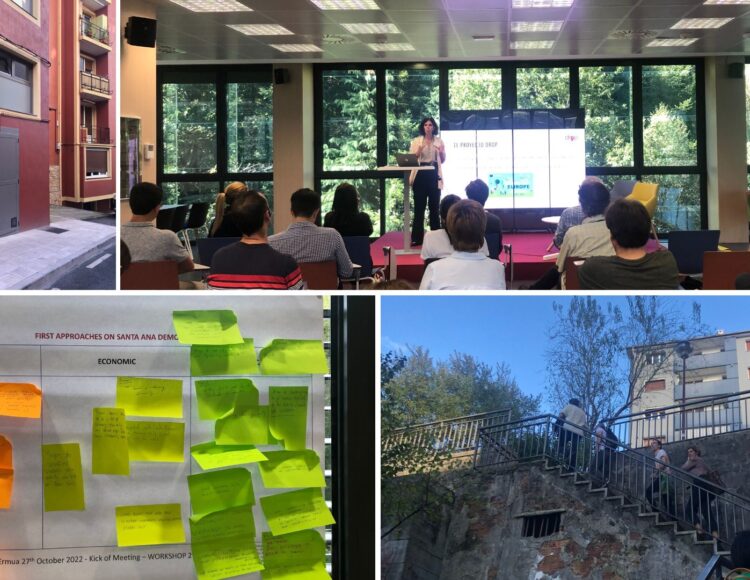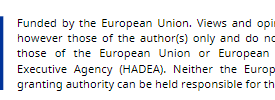In the industrial town Ermua, near Bilbao in the Basque Country, the Santa Ana neighbourhood with post-war privately-owned multifamily buildings is officially starting the work to become a lighthouse renovated district.
Digitally enabled social district renovation processes for age-friendly environments driving social innovation and local economic development, or for short – drOp is Housing Europe’s new project. This is more than an EU-funded initiative because it is very closely linked to the European Affordable Housing Consortium, SHAPE-EU which is demonstrating what do we mean by sustainable housing for social impact. The goal of the project is to support social housing providers, public authorities, and SMEs to deliver social and affordable housing district renovations, which include innovative features, such as the use of smart and circular technologies and new approaches created and managed jointly with the local communities.
drOp will focus on social innovation and local economic development while integrating new technologies and using a human-centred approach. It will also explore the potential of cultural and creative industries. Similarly, Elva (Estonia) will share its expertise in the digital sector, and Matera (Italy) will contribute with its know-how acquired through being the European capital of culture in 2019.
Social housing has many forms and definitions across Europe. In the context of the Basque Country region, social refers to a post-war privately-owned multifamily building typology. An integrated renovation methodology (IRM) will be developed on a strategic level. This will be done while ensuring that communities living in social districts are fully involved in the process of making their neighbourhoods more accessible, connected, and liveable. Residents will therefore be engaged through co-creation processes. One such goal is to have at least 20% of the population involved. Aiming to create an age-friendly environment is important since Santa Ana neighbourhood population is composed of almost 30%, higher than the municipality and national average. All the results should be replicable in other similar contexts, thus an important effort will focus on creating synergies with relevant stakeholders at a European level.
The main responsibility of Housing Europe will be to manage the communication and dissemination process. Other areas where its expertise will be needed are the creation of an integrated methodology, follow up the renovations, drafting studies or supporting peer learning between the partner cities. The Estonian Union of Co-operative Housing Associations (EKYL) is also part of the consortium, and they will contribute to tasks such as developing the human-centred approach or planning capacity-building opportunities.
The ten in the drOp project: Ayuntamiento de Ermua (ERMUA), Promocion Economica de Ermua Sociedad Anonima (PROMO), Fundacion Tecnalia Research & Innovation (TEC), Mondragon Goi Eskola Politeknikoa Jose Maria Arizmendiarrieta S Coop (MGEP), Elva Vallavalitsus (ELVA), Eesti Korteriuhistute Liit Mtu (EKYL), Institute of Baltic Studies (IBS), Comune di Matera (COMT), Consorzio Materahub Industrie Culturali e Creative (MTHUB), Housing Europe.
EU disclaimer:
Funded by the European Union. Views and opinions expressed are however those of the author(s) only and do not necessarily reflect those of the European Union or European Health and Digital Executive Agency (HADEA). Neither the European Union nor the granting authority can be held responsible for them.

